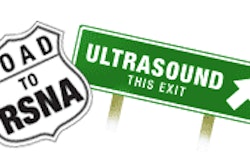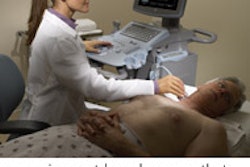CHICAGO - Sonography can help diagnose congenital hypothyroidism, and it should be included with scintigraphy and laboratory studies for neonatal screening of the disorder, according to a presentation at the RSNA meeting on Monday.
Congenital hypothyroidism can cause mental retardation if undetected and not treated with replacement hormone therapy early enough.
In a study on the disorder, researchers from the Hospital das Clinicas and the Medical School of the Federal University of Minas Gerais in Brazil classified patients into those with transitory defects, dyshormogenesis, and developmental anomalies or dysgenesis, using three methods: scintigraphy, laboratory studies, and ultrasound.
The study was part of a mass screening program from 1998 to 2004, and had a patient size of 382.
The parameters evaluated on ultrasound were gland volume, echogenicity, texture, contour of the gland, and anatomical location of the gland. Real-time sonography (SSA-340A, Toshiba, Japan) of the neck was done using a high-frequency 10-MHz transducer.
Ultrasound was useful in detecting ectopia by identifying thyroid tissue outside the typical anatomic location, hemiagenesis by identifying a single thyroid gland lobe, and dysplasia through reduced gland volume.
Among patients with thyroid dysgenesis, 52% showed reduced volume of the gland; among patients with dyshormogenesis, 62% showed increased volume of the gland, the researchers reported.
In 98.5% of the cases in which ultrasound detected a hyperechogenical gland, the diagnosis was thyroid dysgenesis. Nearly 40% of patients with thyroid dysgenesis showed hyperechoic thyroid parenchyma.
Ultrasound and scintigraphy were in agreement in nearly 79% of the cases on the location of the thyroid gland. In the rest of the cases, ultrasound showed the gland in the usual or ectopic location while scintigraphy detected agenesis, or else it was not visible on ultrasound but present on scintigraphy.
Scintigraphy and ultrasound are complementary and should be used together in conjunction with laboratory and clinical studies, the researchers concluded. "In patients with clinical and laboratory evidence of CH (congenital hypothyroidism), scintigraphy is the method of choice for functional evaluation," said Dr. Wilson Tavares, who presented the study results.
"On the other hand, ultrasound is a good noninvasive method for the anatomical assessment of the thyroid gland," he added.
By N. Shivapriya
AuntMinnie.com staff writer
November 29, 2004
Related Reading
Copyright © 2004 AuntMinnie.com



















